Estaca de Bares in Galicia is the northernmost point of Spain and the Iberian Peninsula, dividing the Atlantic Ocean and the Cantabrian Sea. As it juts far into the sea, the cape is swept by strong winds coming from across the Atlantic. Hundreds of thousands of seabirds pass by every season from late summer to early winter, along with a long list of extremely rare pelagic species recorded over the years—some now seen regularly. After record-breaking bird counts in recent years, Estaca has become renowned as the prime seawatching location in Spain and the Western Palearctic. Jorge Verdú, Darío Gijón and I were eager for the hype and visited Estaca at the beginning of the season.
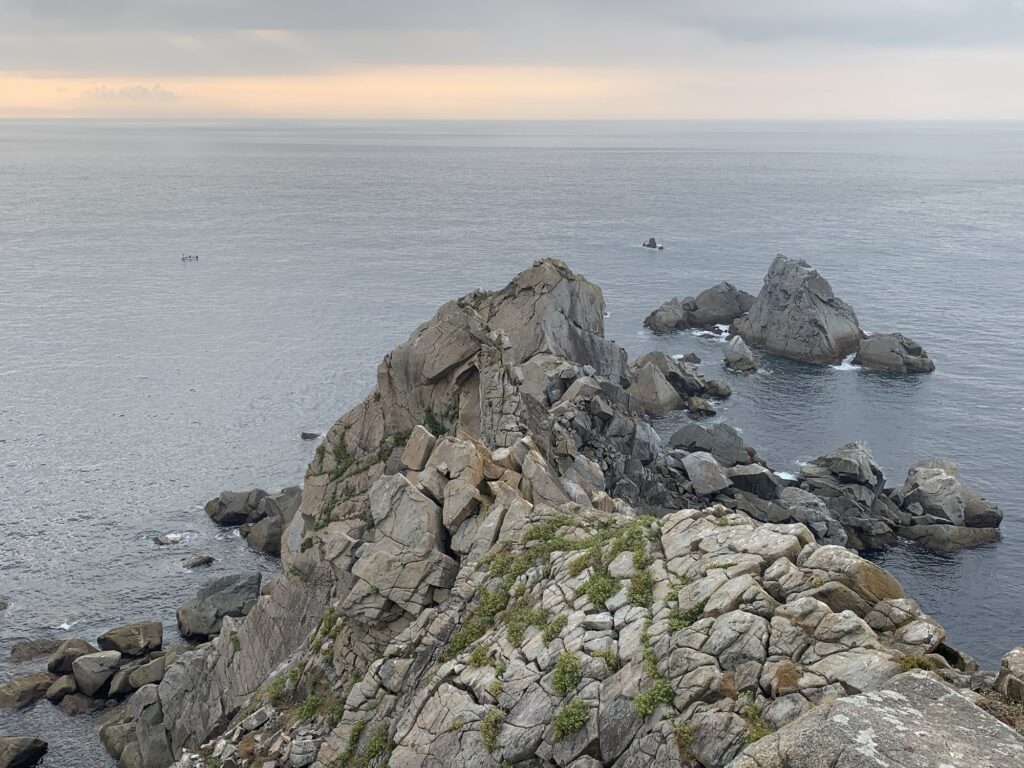
A long day of driving brought us to Estaca late on 17 August and we only managed a walk up to the actual cape at sunset. The pink light was spectacular and we already noticed good numbers of seabirds offshore in the fading glow. Our first groups of northern gannets (Morus bassanus), Manx shearwaters (Puffinus puffinus) and Sandwich terns (Thalasseus sandvicensis) passed westwards — as would hundreds more during the following days at Estaca. These birds are heading south from their breeding grounds across Europe and fly closer to Estaca when winds come from the west. A first parasitic jaeger (Stercorarius parasiticus) and a sooty shearwater (Ardenna grisea) already set the tone for the days to come. Many Cory’s shearwaters (Calonectris borealis) were also passing by, while others lingered around the cape—we later learned they were local breeders foraging near a colony on an islet. We also spotted five undetermined storm petrels fluttering in the dim light close to an enormous pod of common dolphins (Delphinus delphis), which a young boy was excited to watch through our scopes.

We set off quite late the following day from our campsite in Viveiro and reached the bird observatory farther east on the cape. Midday is the least active time of day, but it was good practice for getting used to the jizz and plumages of distant birds. We were also accompanied by the resident Bocage’s wall lizards (Podarcis bocagei) at the observatory — an endemic species of northwestern Iberia.

Other resident birds on the cape included good numbers of yellow-legged gulls (Larus michahellis), some great black-backed gulls (Larus marinus), lesser black-backed gulls (Larus fuscus) and European shags (Gulosus aristotelis). We also received the visits of the odd wren (Troglodytes troglodytes), Dartford warbler (Curruca undata), robin (Erithacus rubecula), stonechat (Saxicola rubicola), black redstart (Phoenicurus ochruros), zitting cisticola (Cisticola juncidis), white wagtail (Motacilla alba) or small flock of goldfinches (Carduelis carduelis) or linnets (Linaria cannabina) foraging around.
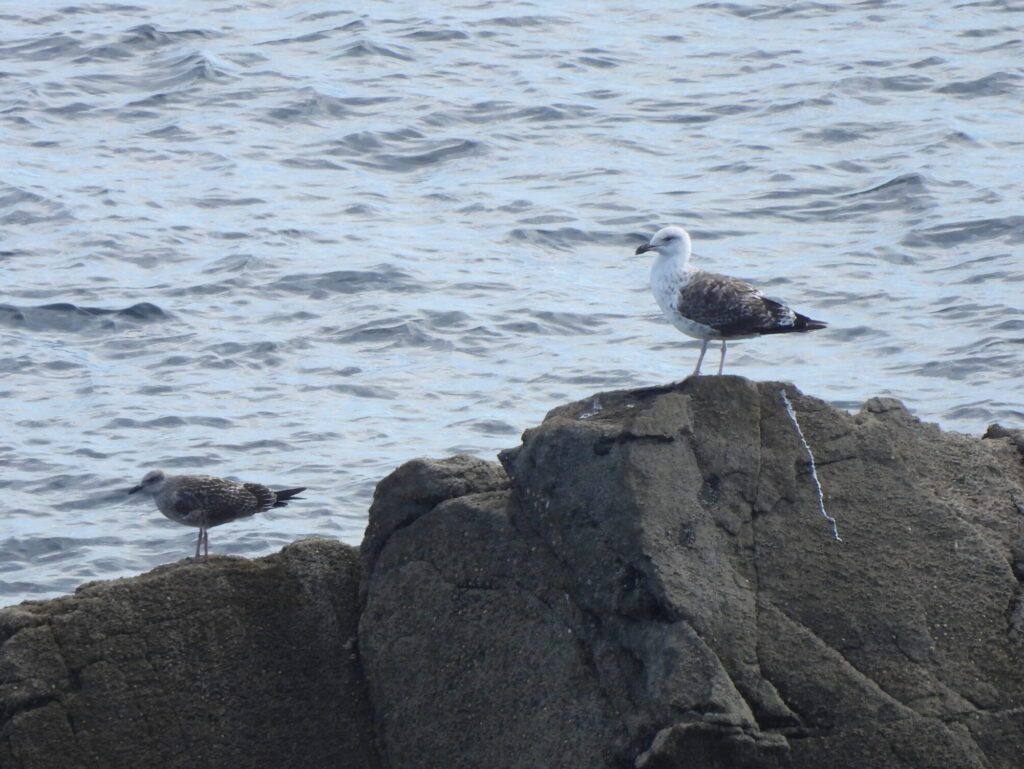
After lunchtime, Antonio “Toño” Sandoval, Ana Rivas, Ricardo Hevia, Alfonso Valderas, Saúl Román, Sébastien Durand, Greg McIvor and others arrived, and we joined them throughout the afternoon — and our stay. We learned and laughed for hours as birds passed in front of the observatory, their numbers increasing as the afternoon went on. We are grateful for the time and wisdom they all shared with us.
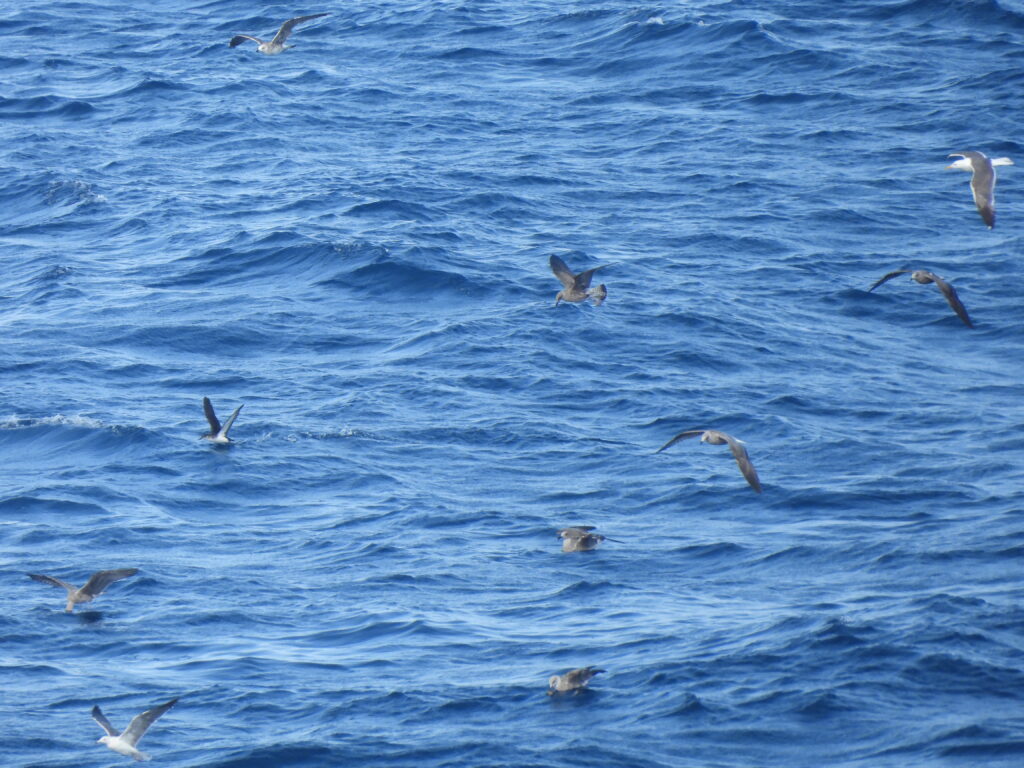
The afternoon developed with moderate numbers of shearwaters, terns and parasitic jaegers as well as the first pomarine jaegers (Stercorarius pomarinus) and great skuas (Stercorarius skua), common scoters (Melanitta nigra), Mediterranean shearwaters (Puffinus yelkouan) of the ‘Balearic‘ mauretanicus form. Other highlights include flocks of little terns (Sternula albifrons), black terns (Chlidonias niger) and “comics“: either common terns (Sterna hirundo) or Arctic terns (Sterna paradisaea). Although we only identified several common terns flying closer to the observatory, we learned that the overall density of Arctic terns is higher, so most birds passing by over the season are likely to be Arctic. Some waders passed as well, including Eurasian oystercatchers (Haematopus ostralegus), ruddy turnstones (Arenaria interpres) and whimbrels (Numenius phaeopus).
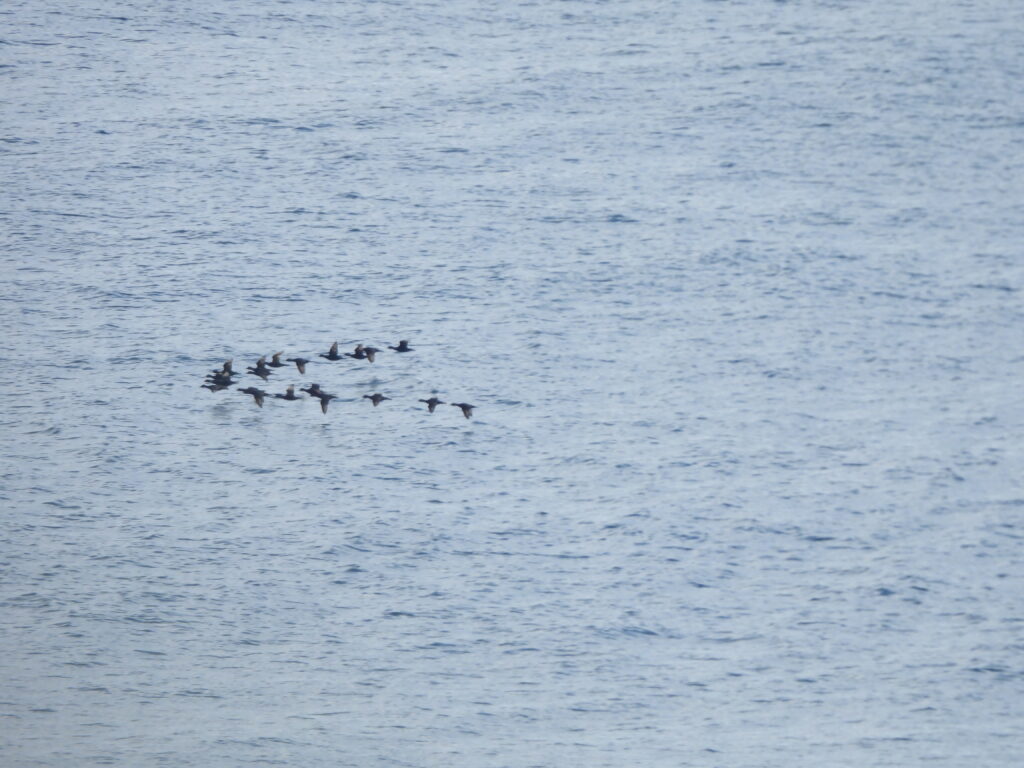
The first prize of the trip came as a Wilson’s storm petrel (Oceanites oceanicus) seen at a distance close enough to make out the key identification features as it fluttered around some buoys. A Scopoli’s shearwater (Calonectris diomedea) among the numerous Cory’s was also a nice addition, as this Mediterranean breeder is uncommon in these waters.
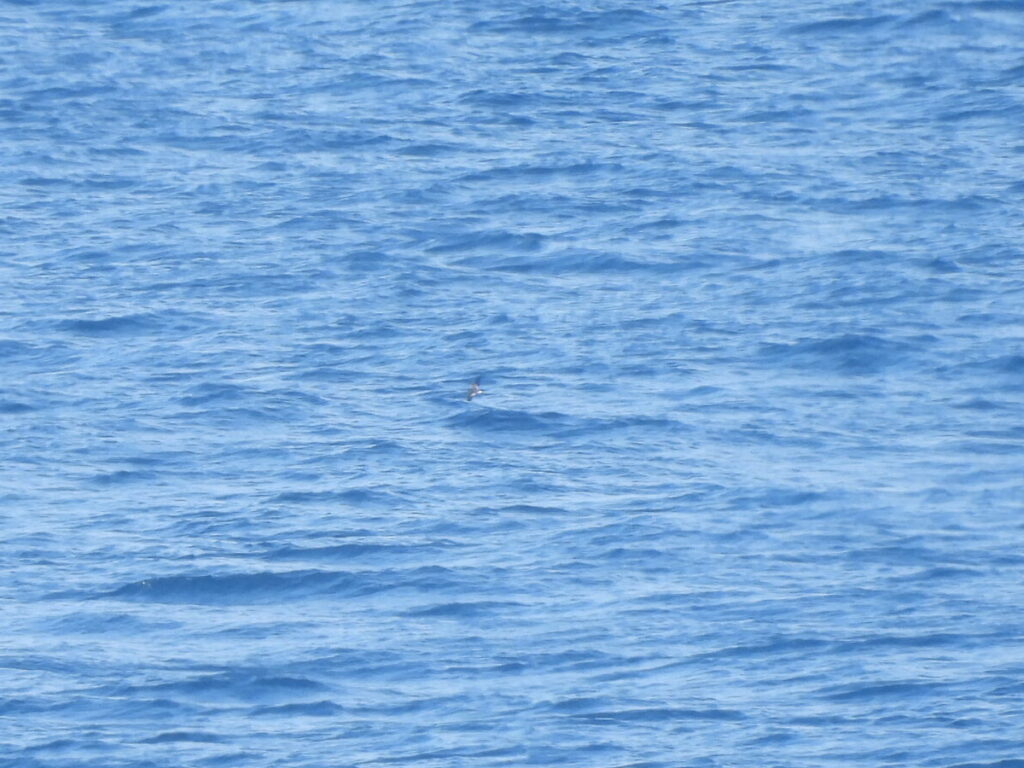
But it was a uniformly darkish large skua, with actively moulting P10 wing feathers and limited white flashes on the upperwing, that caught everyone’s attention. The bird was a close candidate for a south polar skua (Stercorarius maccormicki), an Antarctic species only recently recognized as a regular visitor to Western Palearctic waters very recently, mainly overlooked due to its similarity to the great skua. The birdwatchers present were unsure of the identification — while moulting primaries are a solid feature of maccormicki later in the season, some skua may also moult such feathers during August, as Dani López-Velasco pointed out a few days later.
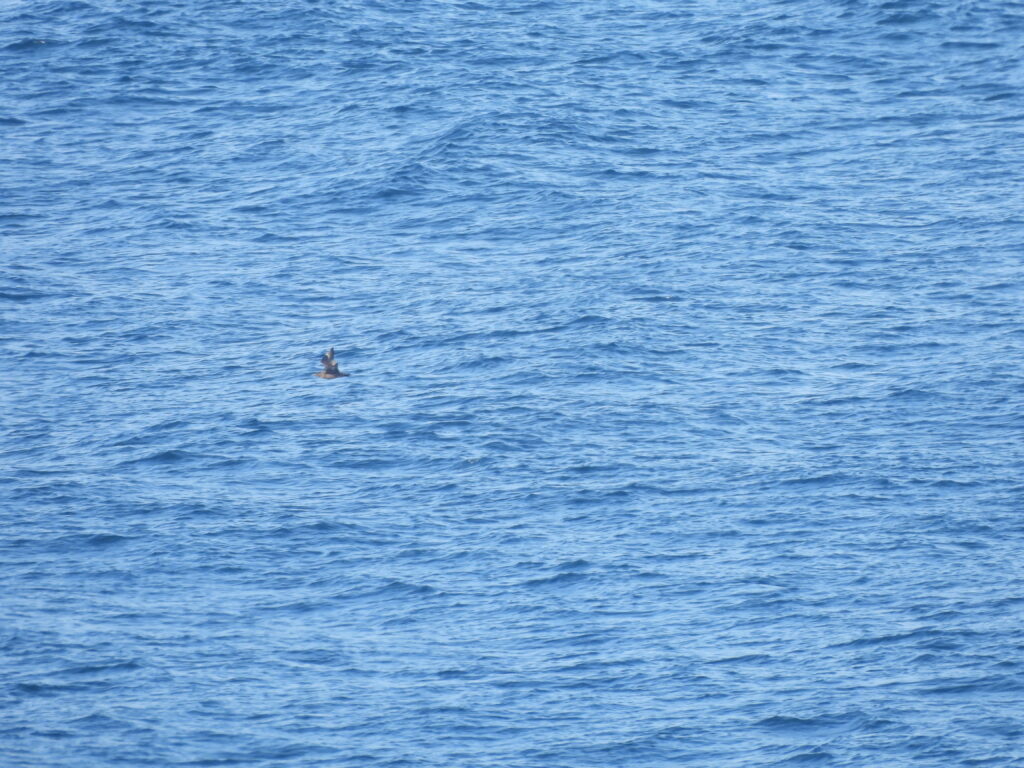
On 19 August, we spent the entire morning counting and scoping mostly abundant birds at a slow pace, observing the diversity of morphs and ages of parasitic and pomarine jaegers throughout the day, all in the company of Toño and Sébastien. The sight of two adult poms — one jet black and one light morph—migrating together at close range was astonishing. During the quieter midday hours, we enjoyed some tapas in the picturesque village of Porto de Bares nearby, and Jorge and I took a dip in the freezing but crystal-clear Atlantic waters.
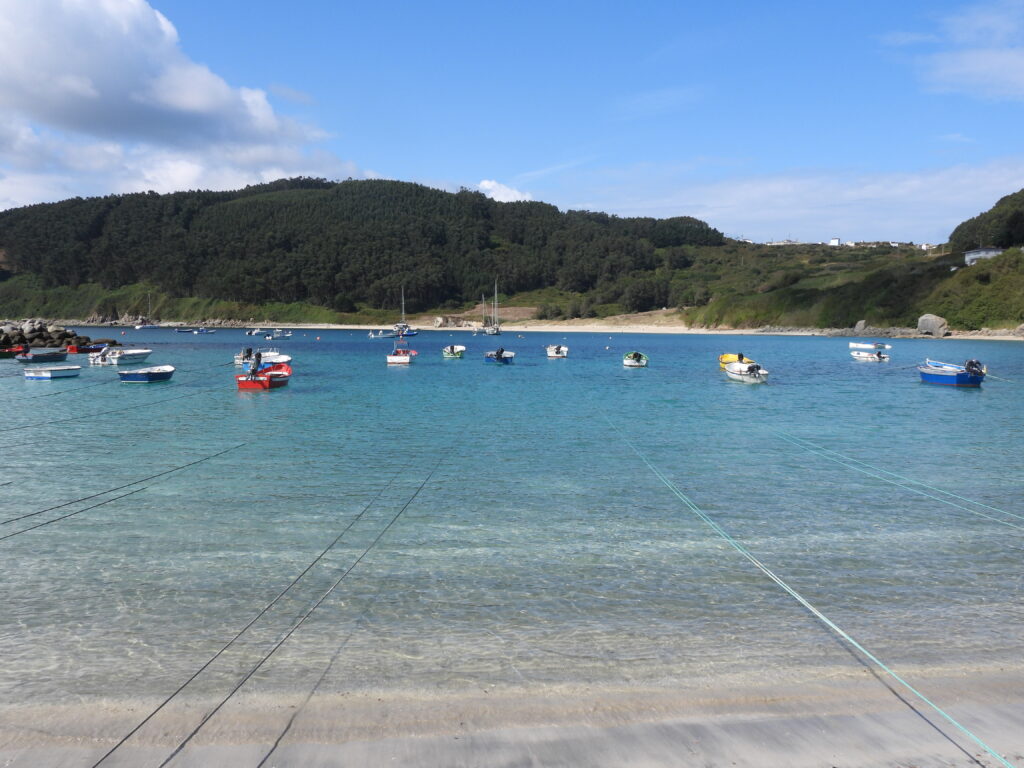
We got back just after lunch, a few minutes behind Toño. While he kept pace with Sébastien, who was counting birds during midday, a northern fulmar (Fulmarus glacialis) was flying at mid-distance in front of us. Quickly, we set up the scopes and connected with the bird — not the easiest task in the vastness of the ocean. These are among the bonus species of any visit to Estaca: unpredictable and seemingly not tied to any particular wind regime, unlike most other seabirds. We learned that, on average, one fulmar is recorded for every three Pterodroma petrels — a highly prized sight in itself. In addition, their distinctive flight pattern and bright white plumage made them distinctive even at a distance.
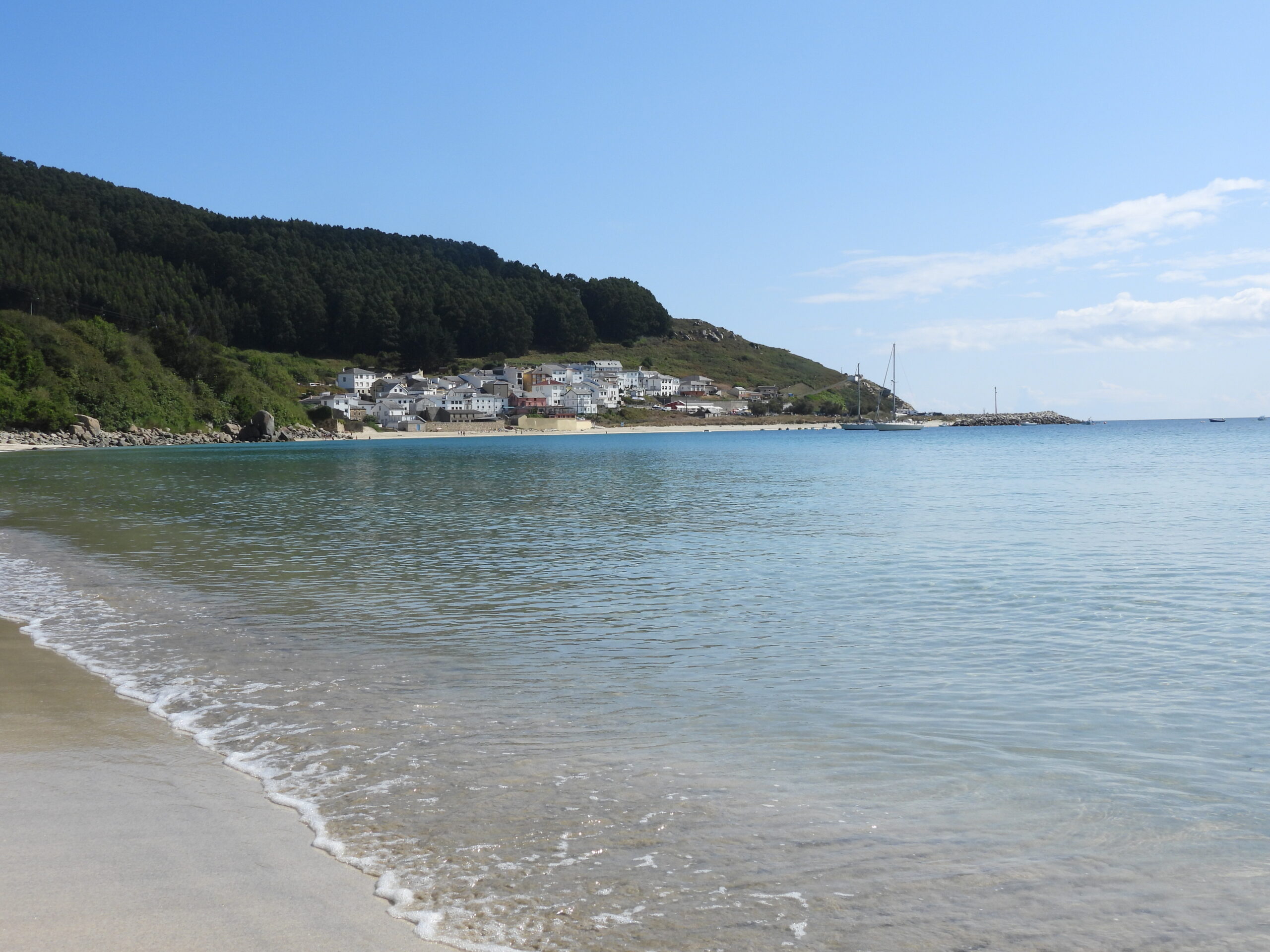
However, the major prize of our visit to Estaca came later, at 18:50. A birdwatcher shouted “piquero!” from the other side of the observatory. While we were skeptical at first — a brown-covered young gannet was just passing by — everyone quickly turned far to the right, waiting for a bird to appear. Indeed, a magnificent adult brown booby (Sula leucogaster) flew west at relatively close range, not far from the northern gannets. The stunning bird passed across the entire field of view, visible even to the naked eye, allowing for excellent scope observations and decent photographic opportunities. Fewer than 60 of these tropical seabirds have been recorded in Spain to date, and while Estaca is perhaps one of the best places to see the species, only one individual was recorded throughout 2024. Beyond its rarity, this was hands down one of the best-seen birds during our stay on the cape — and one of the most strikingly smart-looking.

Ironically, only after such major encounters did we finally get our first proper views of some long-tailed jaegers (Stercorarius longicaudus), sooty shearwaters and great shearwaters (Ardenna gravis). The last hours of the day feature the most bird activity, with increasing numbers of jaegers and these large shearwater species. Additional birds seen during the evening included mainly flocks of waders, such as red knots (Calidris canutus), European golden plovers (Pluvialis apricaria), black-tailed godwits (Limosa limosa) and bar-tailed godwits (Limosa lapponica).
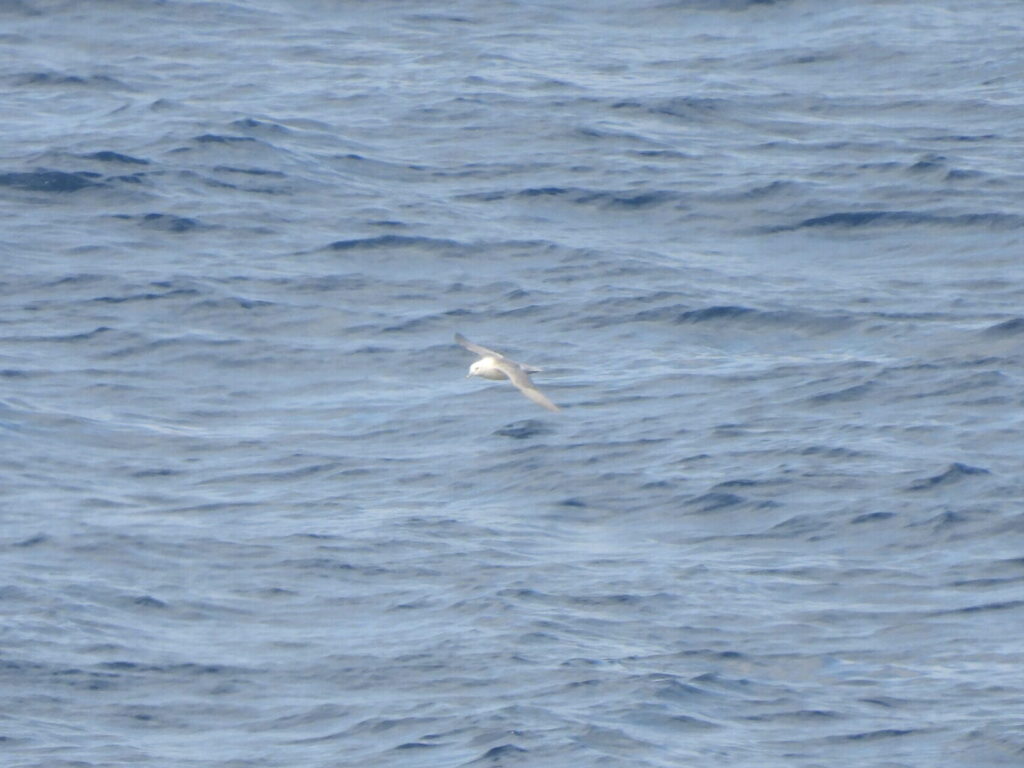
By our last day, 20 August, we had grown confident and managed to scope out the different jaeger and shearwater species on our own. The wind had not been particularly favorable for seawatching at any point during our stay — while expectations were high for the final day, at the end this proved no different. The flow of birds was rather slow, though it still offered some nice views of the species seen in previous days, as well as distant fin whales (Balaenoptera physalus) alongside the more usual common dolphins and bottlenose dolphins (Tursiops truncatus). The bonus bird that afternoon was a second fulmar at a certain distance, foraging around the cape for an extended period and passing back and forth up to three times before heading west later in the evening.
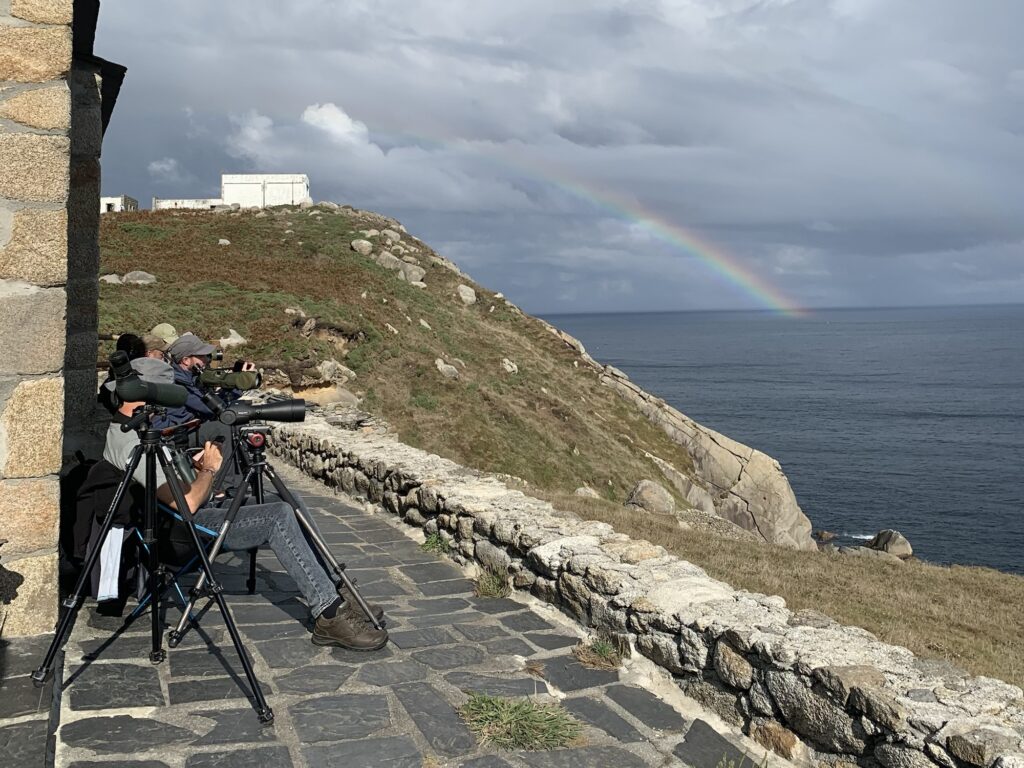
Despite the forecast, a good number of birdwatchers gathered anyway, including the local legends we had spent the last few days with, as well as old friends like Carmen and Celestino González, among many others. That’s when I truly understood: the best part of Estaca de Bares is connecting with other fellow birdwatchers. Newbies and experts, friends and strangers — all scoping the sea, sharing stories, knowledge, and laughs. Ricardo Hevia planned his departure home and then repeatedly postponed it, every single evening. The day ended with a stunning scope view of two poms, a parasitic and a long-tailed jaeger flying together and Rick’s wise words — “hasta el rabo todo es toro“, he said, implying that the evening was not over and the best was yet to come. And I realized it wasn’t all about the birds, after all.




